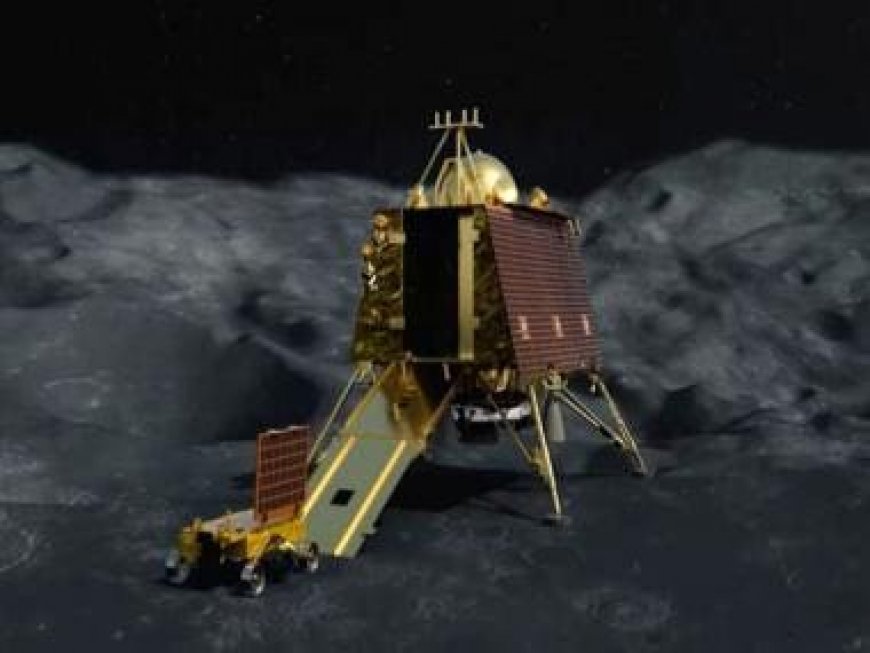One Step Away From History: Chandrayaan-3’s Vikram lander separates from propulsion module
One Step Away From History: Chandrayaan-3’s Vikram lander separates from propulsion module

In a brilliantly executed sequence, ISRO was successful in separating the Chandrayaan-3’s lander module, the Vikram from the spacecraft’s propulsion module.
The separation took place on August 17 at around 1:30 PM. To commemorate this, the team handling Chandrayaan-3 took to X and posted –
Meanwhile, the Propulsion Module continues its journey in the current orbit for months/years.
The SHAPE payload onboard it would
☑️ perform spectroscopic study of the Earth’s atmosphere and
☑️ measure the variations in polarization from the clouds on Earth
– to accumulate…— LVM3-M4/CHANDRAYAAN-3 MISSION (@chandrayaan_3) August 17, 2023
Vikram’s deboosting phase
The Vikram Lander has been positioned about 30-100 kilometres away from its intended landing position. Following the separation, the lander has now entered its “deboost” phase.
The idea is that the Vikram lander will now slowly start accelerating in a direction opposite the Moon’s gravitational pull so that the lander’s velocity gradually decreases, as it approaches the lunar surface. Think of this manoeuvre as slowly tapping the brakes of your car or bike to slow it down. ISRO will carry out the first major deboosting tomorrow, at 4:00 PM
The Vikram lander is now at a junction where the closest point on the moon, known as Peruline, will be 30 kilometres away, and its farthest point, the Apolune, will be about 100 kilometres from the Moon.
Following its separation from the lander module, Vikram-3 is scheduled to perform a soft landing on the south pole of the Moon, on August 23. Following its landing, ISRO will soon get the Pragyan rover working its margin on the moon.
Chandrayaan-3’s journey to the moon
After its launch on July 14, the Chandrayaan-3 spacecraft entered its lunar orbit on August 5. ISRO then performed a series of orbit reduction manoeuvres to slowly trim Chandrayaan-3’s orbit and nudge the spacecraft into position above the Moon’s poles. In a choreographed sequence, these orbit-reducing manoeuvres took place on August 6, 9, 14, and 16.
Adding to the excitement, K Sivan, the former head of ISRO who led the Chandrayaan-2 mission, expressed his upbeat outlook. He voiced his optimism regarding Chandrayaan-3’s anticipated landing on the Moon’s surface on August 23.
With an air of anticipation, Sivan highlighted the significance of this moment, stating that August 23 holds the promise of a remarkable achievement.
Zone of Terror: Been here before
K Sivan acknowledged that Chandrayaan-2 sailed through similar phases with success, yet encountered a challenge during the landing’s second phase, when it was in the terror zone.
The zone of terror or the terror zone is usually the very last leg of the landing of any space rocket. There are multiple things that can go wrong in during this phase. For the Chandrayaan-2 and Chandrayaan-3, the last 15 minutes before the Vikram lander touches down, is usually considered the zone of terror. Everything from this mark on is mission critical – the timing of activating and deactivating the boosters, the force the boosters exert, any variations in wind, or fuel weight of the lander – all these things come into play
Shedding light on the intricacies of the Chandrayaan-3 mission, ISRO’s current chief, S Somanath, provided insights into its design philosophy. He noted that, unlike its predecessor, Chandrayaan-3 is crafted with a failure-based design approach rather than one driven solely by success.
Somanath explained that the focus is on addressing potential deviations or faults. This strategy prioritizes understanding what could possibly go awry and formulating safeguards to counter those scenarios. “The ability to handle parameter variation or dispersion was very limited in Chandrayaan-2. So, instead of a success-based design, we are doing a failure-based design in Chandrayaan-3. What all can fail, and how to protect it — this is the approach that we have taken,” Somanath told PTI.
What's Your Reaction?



























































